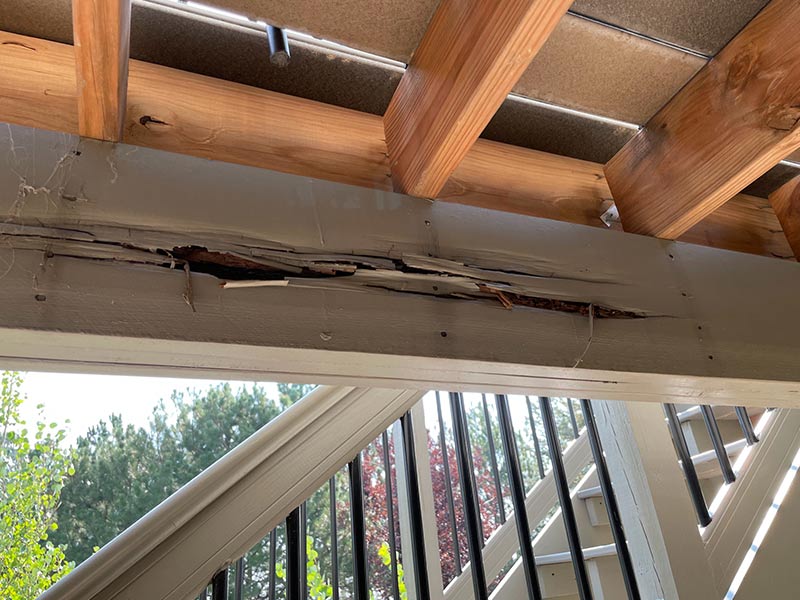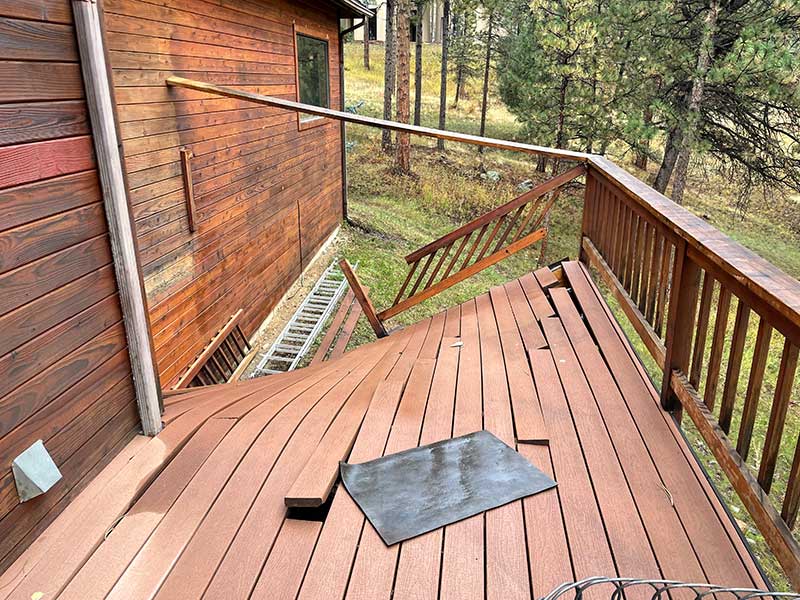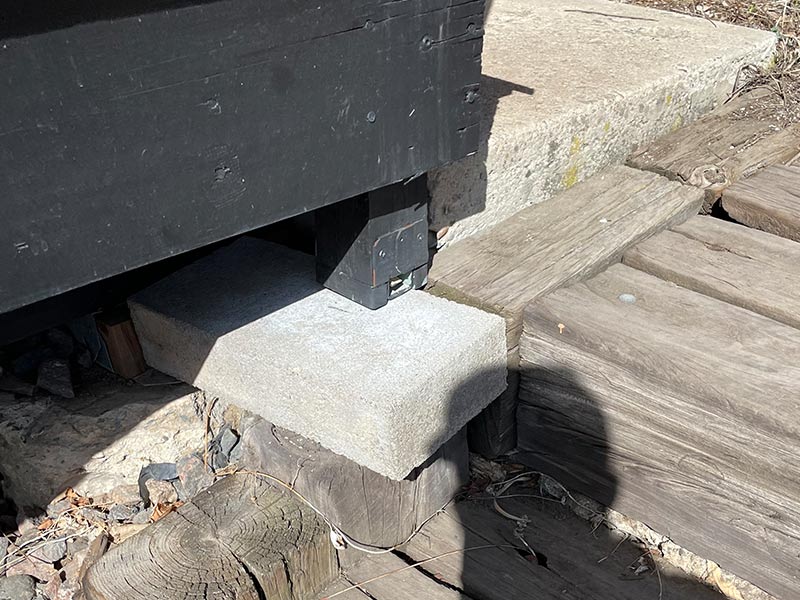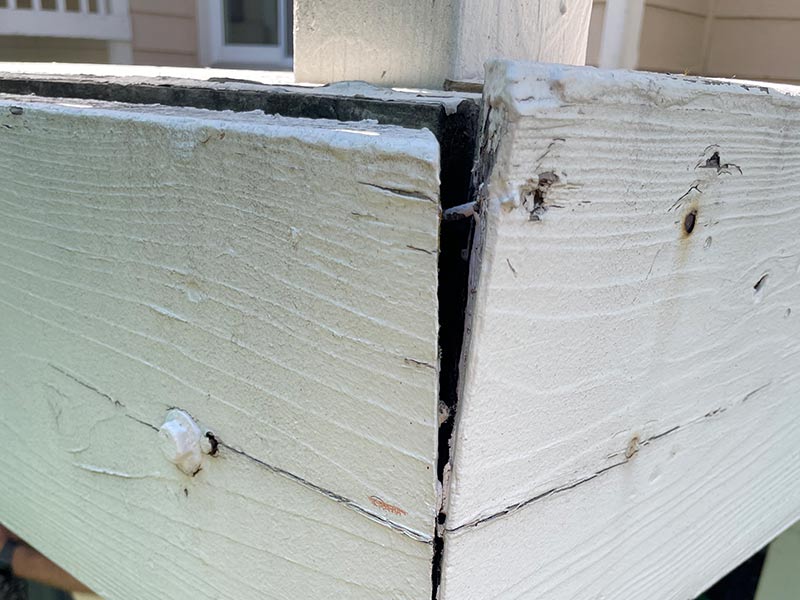DECK SAFETY INSPECTION
Here’s what’s included in our 10-point deck safety inspection:
Ensuring the safety of your deck is crucial for the well-being of you and your loved ones. Here are the top 10 things we will inspect, to ensure your deck is safe:
1. Structural Integrity:
Check for any signs of rot, decay, or damage to the deck’s support posts, beams, and joists. Visually inspect connections for visible signs of sagging or instability.
2. Ledger Attachment:
Visually inspect the ledger board, which attaches the deck to your house. It should be securely fastened with lag screws or bolts and properly flashed to prevent water damage.
3. Railings and Balusters:
Make sure the railings are sturdy and meet local building codes for height and spacing between balusters. Ensure that balusters are properly attached and not loose or deteriorated.
4. Deck Boards:
Check for any cracked, warped, or splintered deck boards.
5. Stairs and Steps:
Examine the stairs and steps for stability. They should be securely attached, with even riser and tread heights. The handrails should be present and graspable.
6. Fasteners and Connectors:
Visually inspect nails, screws, or other fasteners to look for missing or loose connectors, such as metal joist hangers or post anchors.
7. Lighting:
Is there adequate lighting on and around the deck to ensure visibility, especially for evening or nighttime use? This helps prevent trips and falls. Electrical Safety: If your deck has outlets, we will visually inspect accessible outlets and transformers to ensure they are in good condition and up to code.
8. Clearance from the Ground:
Ensure there is proper clearance between the bottom of the deck and the ground. This helps minimize moisture-related issues, such as rot and decay.
9. Drainage:
Check that water can effectively drain away from the deck. We will look for areas where water may pool or collect, since this is a prime cause for structural damage over time.
10. Caisson & Pier Condition:
We will check to see if the footing in good condition or if it show signs of damage or deterioration. We will evaluate if the posts are securely anchored to the footing and if the size appears appropriate for the weight load.
Regular inspections are crucial to ensure the well-being of your outdoor living space.
A safety inspection conducted by a professional can help ensure the long-term usability and stability of your deck.
Your deck is such an important part of your home. A place you can relax, wind down, and recharge your batteries. Somewhere family and friends gather for special occasions. Space where you can enjoy the beautiful Denver weather – year round. It’s a potential safety hazard. Wait, what?
It’s true. Over time, decks can deteriorate and become unsafe if they are not properly maintained. That’s especially true here in the Denver area where the moisture and increased UV can do a number on your deck. And you may not even realize it.
That’s why regular inspections are crucial to ensure the well-being of your outdoor living space.

Weather, you like it or not
Denver’s weather, we love it for its variety, but it can wreak havoc on your deck. One minute you’re bundled up in a snowstorm with sub-zero windchills, and the next you’re basking in sunshine with temperatures soaring into the 60s. This constant change presents a double threat to your deck.
First, the rapid melting of snow can be a recipe for disaster. As the snow melts, moisture penetrates the wood. Then, when temperatures inevitably dip below freezing again, this trapped moisture expands, creating pockets within the wood fibers. These pockets, over time, become breeding grounds for rot. The worst part? Often, there’s no visible sign of this damage until it’s become a widespread problem lurking beneath the surface of your deck.
Secondly, Denver’s powerful UV rays add another layer of stress to your deck. Being a mile high means UV intensity is 20% stronger than at sea level. Just like your skin can suffer from sunburn after prolonged exposure, your deck experiences a similar type of damage. Over time, this relentless UV exposure can lead to fading, cracking, and warping.




